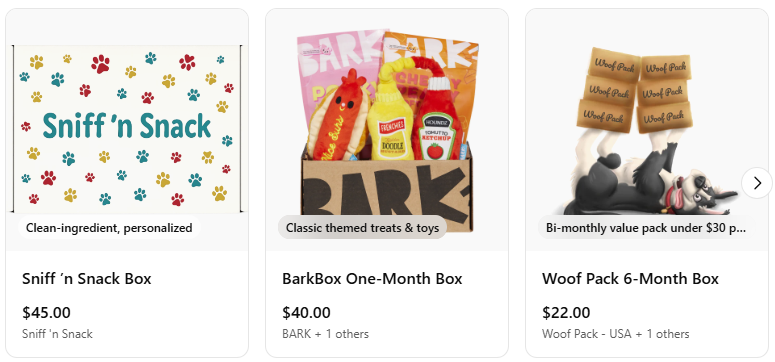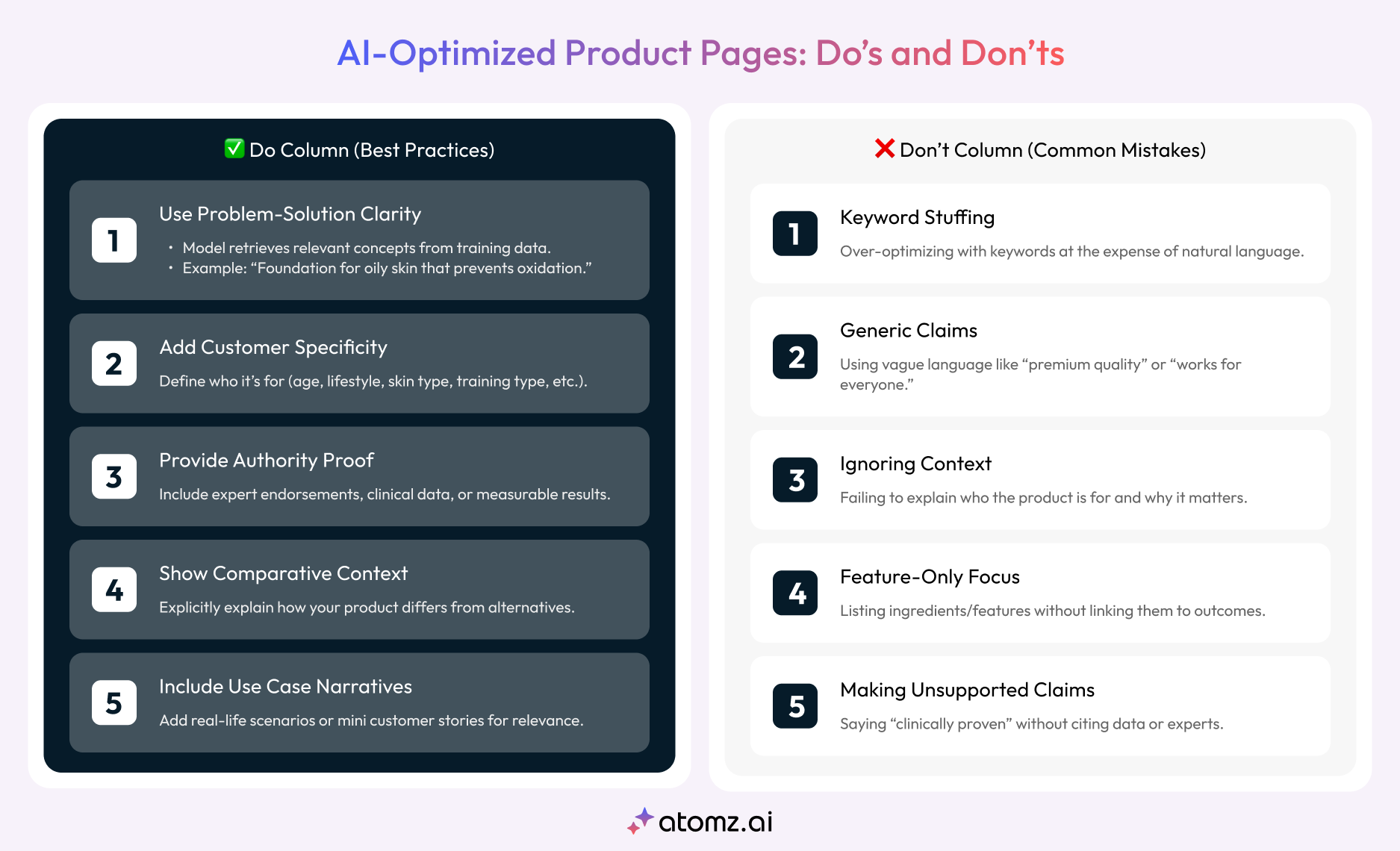
ON THIS PAGE
Stay Updated with latest in AI SEO
21 November 2025
Every pet brand begins with the same promise: “We love pets.”
Here’s the twist: AI notices that love through clean data. Structure is what makes your story visible. Clarity becomes real when you see how product data transforms into something AI can understand, the shift that platforms like Atomz are built to make possible.

Today’s pet parents are no longer browsing tabs; they are asking questions. “What’s the best chew toy for my golden retriever?” “Which probiotics help with a sensitive stomach?” And now, thanks to Shopify × OpenAI, those questions can be turned into instant purchases within ChatGPT.
No redirects. No abandoned carts. No ten-click journeys.
Which brings us to the real issue: most brands have no idea how visible they are inside ChatGPT. Discover your brand’s visibility with the AI Visibility Audit.
AI-powered commerce rewards brands whose data speaks the language of intent, where every product attribute, ingredient, and promise is clear enough for both humans and machines to understand. You just need to teach AI how to read your catalog.
This guide breaks down how Shopify’s new Agentic Commerce Protocol (ACP) works for pet brands, along with a playbook to make your products visible, trustworthy, and buy-ready in the age of AI shopping. Success in this AI-powered ecosystem will depend on how accurately your product data and fulfillment practices align with conversational discovery.
The integration enables users to discover and purchase products directly within ChatGPT, without needing to leave the conversation. It transforms shopping into a single, intent-driven flow where users can ask, compare, and purchase all in one place.
For pet brands, this means:

If you are unsure how you appear today, the AI Visibility Audit provides a real-time snapshot of where your catalog stands inside ChatGPT.
The AI shopping flow is straightforward: a structured catalog enables ChatGPT to interpret shopper intent, surface relevant products, and complete checkout in the same conversation. Shopify processes the order, and you fulfill it as usual. It’s still your brand and customer; the purchase just happens inside the conversation.
Below are the best practices every pet brand should follow to stay discoverable, trusted, and purchase-ready in the age of AI commerce.
.png)
The foundation of AI commerce is structured, accurate, and detailed product data. ChatGPT doesn’t guess; it relies on your feed. We have outlined that more deeply in our article on prompt-optimized product descriptions.
If you want to see how AI interprets your product pages today, check the AI Visibility Audit. What matters next is how you structure the data behind each product:
Avoid vague product titles like “Dog toy- medium” and keep all images and SKUs fully updated to prevent the AI discovery problems discussed in Product Pages Invisible to GPTs.
Example: “ToughChew Rope L- for large-breed heavy chewers (Labrador, GSD), 3 ft, machine-washable.”
To make this distinction even clearer, here’s a side-by-side view of Do’s and Don’ts.

AI shopping happens through natural dialogue. Your brand tone should convey a sense of empathy, expertise, and relatability.
Avoid overly clinical or robotic copy that lacks warmth or clarity. Don’t assume AI will rewrite it; your data is the source of truth.
Example: “Gentle on sensitive stomachs and reviewed by vets, so your pup can snack without worry.”
When users can buy directly inside ChatGPT, fulfillment accuracy becomes part of your reputation.
Avoid overpromising on delivery timelines you can’t sustain. Don’t redirect users out of chat for no reason; the entire flow should stay conversational.
Example: “Ships within 24 hours and arrives in 2 to 3 days. If your pet doesn’t love it, we will refund you within 30 days- no return label needed.”
Structure your data and copy for natural language queries. For example:
On the other hand, do not rely solely on traditional SEO keywords; chat discovery is intent-driven and avoid generic tags that fail to capture user intent.
Here’s what strong, intent-aligned phrasing looks like:
Example: “Hip and joint chews for senior dogs with mobility issues.”
AI-driven discovery is constantly changing, influenced by shifting user intent and evolving product data, which aligns with our findings on why some pages become invisible to GPT models. Here’s what to keep an eye on:
Don’t set your data and forget it. Stale copy, outdated metadata, and ignored feedback all reduce your visibility in AI-driven results. Negative or repeated chat questions are signals you can’t overlook; they directly influence how often your products are ranked, recalled, and recommended.
AI commerce is shifting the buyer journey from search-and-click to ask-and-buy. Success now depends on how clearly AI can interpret your products and how confidently customers choose them. Brands that invest in structured data, conversational clarity, and seamless fulfillment will be the ones AI surfaces first, and the ones shoppers trust most.
Winning in AI commerce isn’t about creating more content; it’s about clearer data, better language, and dependable delivery. The brands that prioritize these fundamentals will remain visible as chat-based shopping becomes the norm.
Streamline your workflow, achieve more
Richard Thomas
Create buying intent instantly
Create buying intent before customers search. 25%+ conversion lift guaranteed.
Why Prompts Matter
AI Search That Converts 3x Better
Get the latest in AI-powered search, UX trends, and eCommerce conversions—straight to your inbo
No spam. Just powerful insights.
👉 Join thousands of growth-focused brands.

